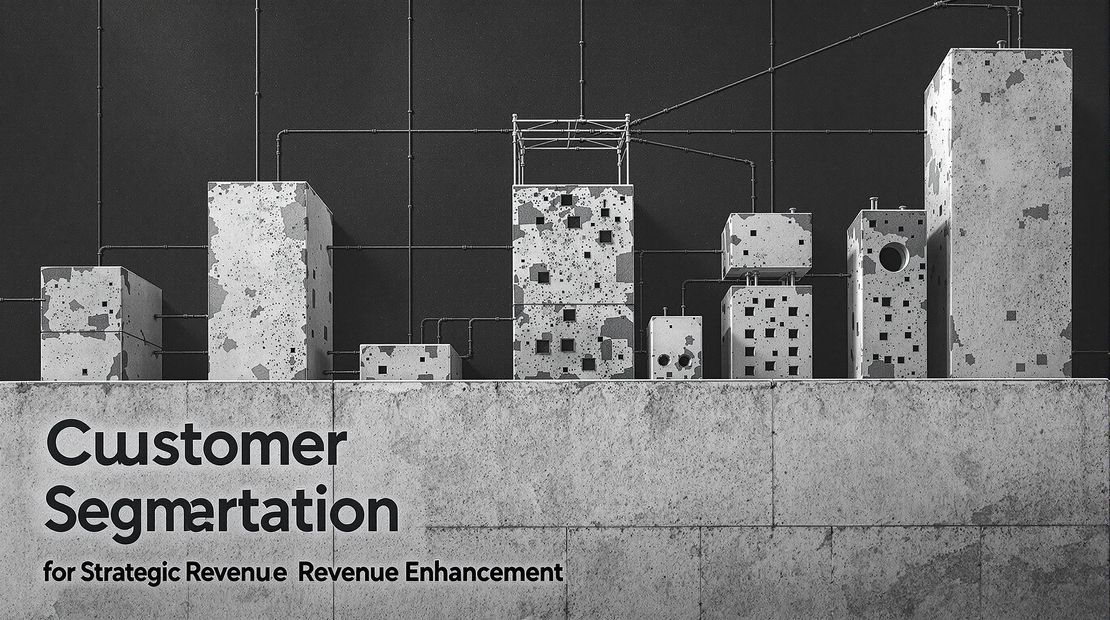
Customer Segmentation by AI: A Practical Workshop
- InsightOS Team
- Technology , Data
- July 12, 2023
Table of Contents
What is Customer Segmentation and Why Does It Matter?
Customer segmentation is the process of dividing your customer base into distinct groups based on shared characteristics. These characteristics can include demographics, purchase history, behavior, and more. By understanding these segments, you can create more targeted and effective marketing campaigns, leading to increased revenue and customer loyalty.
Why it Matters:
- Personalized Marketing: Tailor your messaging and offers to specific customer needs
- Improved Conversion Rates: Increase the likelihood of customers making a purchase
- Enhanced Customer Loyalty: Build stronger relationships with your customers
- Optimized Resource Allocation: Focus your marketing efforts on the most profitable segments
Learn more about the benefits of personalized marketing
Key Types of Customer Segmentation
There are several ways to segment your customers. Here are some of the most common:
- Demographic Segmentation: Based on factors like age, gender, location, income, and education
- Behavioral Segmentation: Based on customer actions, such as purchase history, website activity, and engagement with marketing materials
- Psychographic Segmentation: Based on customer values, interests, lifestyle, and personality
- Geographic Segmentation: Based on customer location, such as country, region, or city
Explore different segmentation strategies
A Practical Workshop: How to Segment Your Customers
Let’s walk through a practical approach to segmenting your customers:
- Gather Your Data: Collect relevant data from your CRM, website analytics, and other sources
- Identify Key Variables: Determine which variables are most relevant for your business
- Analyze Your Data: Use data analysis abilities to identify patterns and group your customers into segments
- Create Customer Personas: Develop detailed profiles for each segment to better understand their needs and motivations
- Test and Refine: Continuously monitor the performance of your segments and make adjustments as needed
Get a deeper understanding of data analysis abilities
Strategic Revenue Enhancement Through Segmentation
Once you’ve segmented your customers, you can use this information to enhance your revenue:
- Targeted Marketing Campaigns: Create personalized marketing campaigns for each segment
- Product Recommendations: Offer product recommendations based on customer preferences
- Pricing Strategies: Develop pricing strategies that are tailored to each segment
- Customer Retention: Implement strategies to retain your most valuable customers
Learn how to create targeted marketing campaigns
Case Study
(A real-world example of a business that successfully used customer segmentation to enhance revenue would go here. For now, we’ll leave this placeholder.)
Conclusion
Customer segmentation is a powerful strategy for enhancing revenue and building stronger relationships with your customers. By understanding your customer base and tailoring your marketing efforts to specific segments, you can unlock significant growth opportunities. Ready to take your revenue to the next level? Contact us today to learn how InsightOS can help you implement a successful customer segmentation strategy. InsightOS is your partner in data-driven success. We provide the abilities and expertise you need to transform data into actionable insights.
Key Elements Used:
- Simple and Direct Language: Avoids jargon and uses clear, concise language
- Corporate Tone: Maintains a professional and authoritative voice
- Focus on Benefits: Emphasizes the value of customer segmentation for the reader
- Actionable Insights: Provides practical advice and guidance that readers can implement
- Clear Structure: Uses headings, subheadings, and bullet points to make the post easy to read and understand
- Internal Links: Includes placeholders for links to future sub-posts to encourage further engagement
- Strong Call to Action: Encourages readers to take the next step
Next Steps:
Remember to replace the placeholder links with actual links to your sub-posts once they are created. Also, fill in the case study section with a relevant example.
This blog post is now ready to be published on your website. Let me know if you have any other questions or need further assistance!

